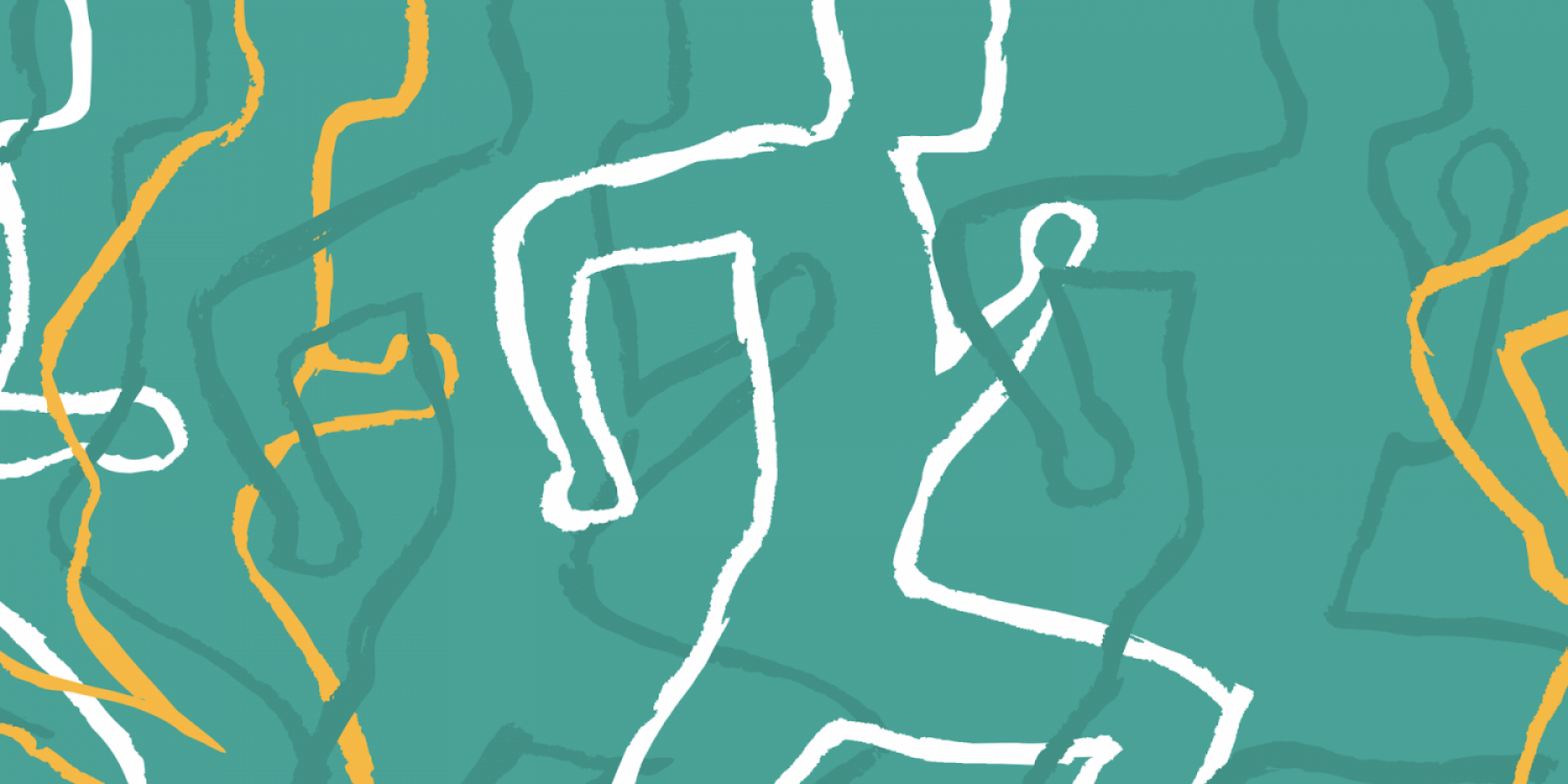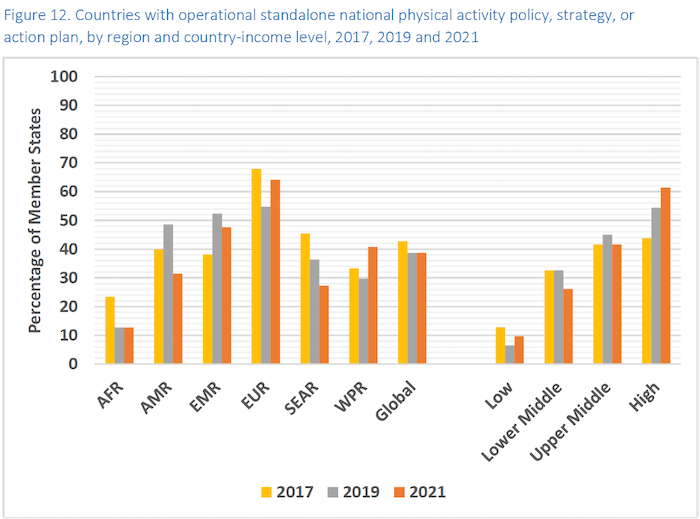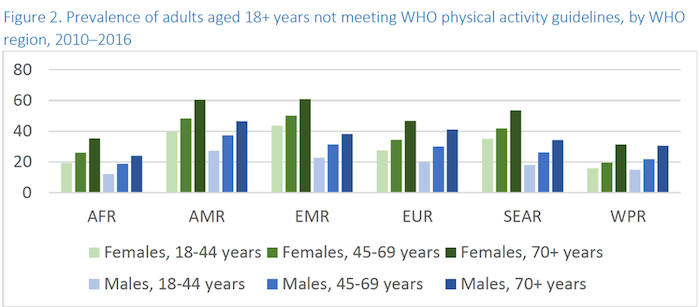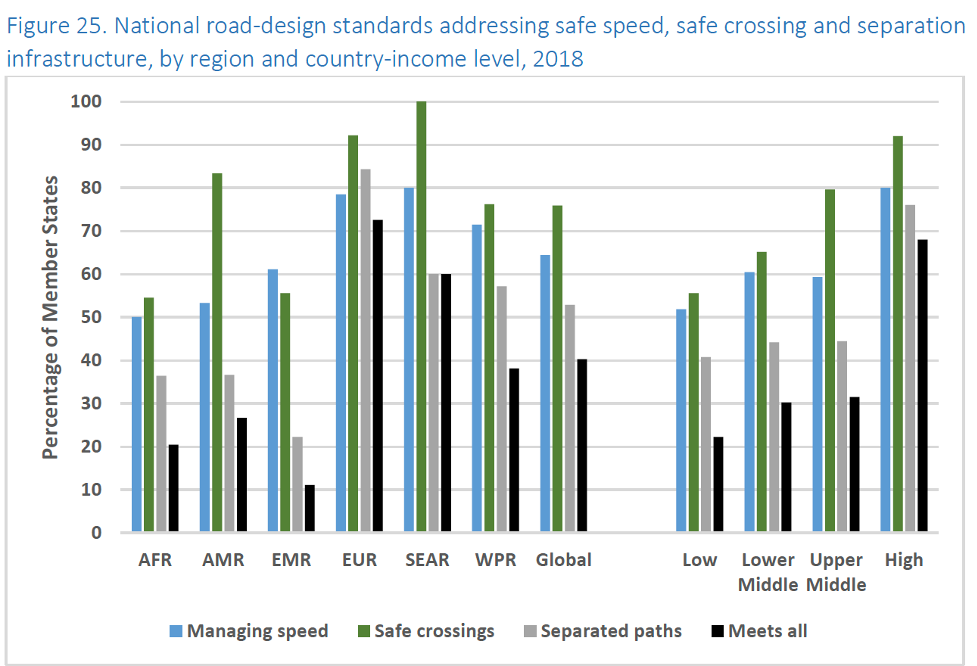High cost of physical inactivity highlighted in first-ever global report
19th October 2022

19th October 2022
Data from 194 countries show that overall, progress is slow and that countries need to accelerate the development and implementation of policies to increase levels of physical activity and thereby prevent disease and reduce burden on already overwhelmed health care systems.
In this new episode of "Voices of the health revolution" podcast series, Fiona Bull, Acting Director and Programme Manager in the WHO Department of Prevention of NCDs, highlights ways to get the Global Action Plan on Physical Activity launched five years ago back on its feet; including investing in “health-enabling environments” so that individuals aren’t left on their own to become more physically active, and supporting governments to take broad-based actions that encompass other ministries beyond those responsible for health and physical activity.
Five years ago the world’s countries adopted the World Health Organization (WHO) Global Action Plan on Physical Activity (GAPPA). But putting it in place “has been slow and uneven, resulting in little progress towards increasing population levels of physical activity… and a reversal of progress in several key areas,” says the report. Key findings include:
The 2015 Sustainable Development Goals committed to a 15 per cent reduction in physical inactivity. All governments signed up to this. Yet, it’s very clear from the WHO projections that this target will be missed unless there is major change.

You’ve probably heard from people near and dear to you about how when they were kids they roamed freely in their neighbourhoods from morning to night. It’s what experts now call ‘active play’. Such memories might be exaggerated but the WHO report states clearly that today, 80 per cent of adolescents do not meet the recommended levels of physical activity, along with 25 per cent of adults.
Physical activity leads to a 20-30 per cent reduction in premature death, says WHO in the report, titled the Global status report on physical activity – 2022. People who meet the recommended minimum levels of physical activity see a 7-8 per cent reduction in cardiovascular disease, depression and obesity, and a 5 per cent reduction in Type 2 diabetes.
If current trends continue, almost 500 million new cases of preventable noncommunicable diseases (NCDs) will occur between 2020 and 2030, the report forecasts. Treating them will cost just over US$300 billion or around US$27 billion a year. Nearly half (47 per cent) of the new NCD cases will result from hypertension, and 43 per cent will be caused by depression.
36.8 per cent of adults in high income countries don't meet minimum recommended levels of physical activity, and the figure is growing. That's more than double that of low- and mid-income countries (16.2 per cent).
Ironically, high-income countries were more likely than all other country income groups to report creating national policies, guidelines, design standards, and having taken action where people live, work and play.

AFR = Africa, AMR = Americas, EMR = Middle East, EUR = Europe, SEAR = South East Asia, WPR = Western Pacific
“Globally, there are inequalities in levels of physical activity between women and men, girls and boys, old and young, and the socioeconomically advantaged and disadvantaged – this is unfair and unjust,” says the report. For example, in most countries, women are less active than men, while those who walk and cycle are more vulnerable to death and injury because of road crashes.
Physical activity for work or travel happens far more than for leisure or recreation, according to a study of 100 low- and mid-income countries. WHO warns that growing inactivity means “already stretched health systems are burdened with preventable disease today and even more so in the future, and communities fail to benefit from the wider social, environmental and economic benefits associated with more people being more active.”

Communication campaigns on the benefits of physical activity pay for themselves many times over and are one of the WHO 'best buys'—proven, low-cost investments in tackling risk factors for NCDs, including physical inactivity. What is missing, says WHO, is global standards or best practices. Those will be available later in 2022, promises the report.
The Global Action Plan includes 29 indicators that measure countries’ progress towards getting people to move more. The progress report finds:
According to Dr Fiona Bull, Acting Director and Programme Manager in the Department of Prevention of NCDs at the World Health Organization, one of the main issues is that governments’ efforts often are not well coordinated. “For example, we know we need the contributions of ministries of transport and ministries of urban design and planning to make sure we’ve got places to cycle safely, walking infrastructure and networks, parks and playgrounds and sporting facilities,” she told Voices of the health revolution, the NCD Alliance podcast.
“Getting the places right is really important… along with, and working with, ministries of education, ministries of sport and ministries of health, so that all government is contributing,” she added.